An Analysis for the Works of Escher and Their Use in Art Education
Hirohiko Araki (荒木 飛呂彦 , Araki Hirohiko, born June 7, 1960 in Sendai, Miyagi[3]) is a Japanese manga artist, primarily known for being the writer of JoJo's Bizarre Adventure, which this wiki is based on.
His work on JoJo's Baroque Adventure is divided into several parts and continues to be serialized for thirty years, totaling 122 volumes (as of December 2018), circulating over 100 million copies (July 2019).[4] His style has been described as an "experimental, but definitive approach.[v] [vi]"
Contents
- 1 Works
- 1.one Manga
- one.two Other
- 2 Personal life
- 2.ane Family unit
- three Biography
- 3.1 JoJo's Bizarre Gamble
- four Style and Influences
- 5 Gallery
- five.1 Artist Photos
- 5.2 Tributes
- 5.3 Anthology Covers
- 6 Trivia
- 7 References
- 8 Site Navigation
Works

A cover of Weekly Shōnen Jump featuring Araki's JoJo'south Baroque Chance.
Manga
- Poker Under Arms (武装ポーカー , Busō Pōkā, 1980)
- Outlaw Human (アウトロー・マン , Autorō Man, 1981)
- Say Hi to Virginia' (バージニアによろしく , Bājinia ni Yoroshiku, 1982)
- Cool Shock B.T." (魔少年ビーティー , Mashōnen Bī Tī, October 23, 1982–November 22, 1983)
- Baoh: The Visitor (バオー来訪者 , Baō Raihōsha, October 9, 1984 – Feb 12, 1985)
- Gorgeous Irene (ゴージャス☆アイリン , Gōjasu Airin, 1985–1986)
- JoJo's Bizarre Take a chance (December two, 1986–ongoing)
- The Lives of Eccentrics (変人偏屈列伝 , Henjin Henkutsu Retsuden, 1989–2003)
- Under Execution Under Jailbreak (死刑執行中脱獄進行中 , Shikei Shikkōchū Datsugoku Shinkōchū, December 28, 1994)
- Dolce and His Main (ドルチ ~ダイ・ハード・ザ・キャット~ , Doruchi Dai Hādo Za Kyatto, 1996)
- Thus Spoke Kishibe Rohan]' (岸辺露伴は動かない , Kishibe Rohan wa Ugokanai, June 24, 1997–ongoing)
- Expressionless Man's Questions (デッドマンズQ , Deddomanzu Kuesuchonzu, June ii, 1999–July 7, 1999)
- Oingo Boingo Brothers Adventure (オインゴとボインゴ兄弟 大冒険 , Oingo to Boingo Kyōdai Daibōken, October 23, 2002)
- Rohan at the Louvre (岸辺露伴 ルーヴルへ行く , Kishibe Rohan Rūvuru e Iku, April 8, 2010)
- Rohan Kishibe Goes to Gucci (岸辺露伴 グッチへ行く , Kishibe Rohan Gutchi e Iku, Baronial 23, 2011)
- Jolyne, Fly High with GUCCI (徐倫、GUCCIで飛ぶ , Jorīn, Gutchi de Tobu, December 22, 2012)
Other
- Famicom Jump II: Saikyo no Shichinin (February 1991, seventh dominate monster design)
- Kamedas (1993, an alternate story of Kochira Katsushika-ku Kameari Kōen-mae Hashutsujo W , an illustration)
- JoJo's Bizarre Adventure (novel) (Nov 4, 1993, novel written past Mayori Sekijima and Hiroshi Yamaguchi, illustrated by Araki)
- JoJo6251 (Dec ten, 1993, art and guidebook)
- JOJO A-GO!GO! (Feb 25, 2000, artbook)
- Music is the Fundamental of Life (December 13, 2000, anthology by Sugiurumn, cover illustration)
- GioGio'south Bizarre Adventure 2: Aureate Heart, Aureate Ring (May 28, 2001, novel written by Gichi Ōtsuka and Tarō Miyashō, supervised and illustrated by Araki)
- Life Basis Music (Feb 27, 2002, album past Sugiurumn, cover illustration)
- Alex Rider W Series (女王陛下の少年スパイ!アレックス) (2002-2007, cover analogy)
- Stormbreaker W (novel, illustrations for Fantasy Press Westward )
- Kochira Katsushika-ku Kameari Kōen-mae Hashutsujo Westward (2006, 30th anniversary special illustration)
- "Catwalk" (Apr 26, 2006, single by SOUL'd OUT W , cover analogy)
- Uniqlo W (2006, T-shirt design)
- Fist of the North Star West (2006, special tribute illustration in Weekly Comic Bunch)
- Prison cell Westward (September 7, 2007, front end cover illustration)
- The Book: JoJo'due south Baroque Adventure 4th Some other Twenty-four hours (Nov 26, 2007, novel written by Otsuichi, supervised and illustrated by Araki)
- The Dancing Girl of Izu W (2008, comprehend illustration)
- "Breeeeze Girl" (June 24, 2009, a unmarried by Base of operations Ball Acquit W , comprehend illustration of the limited edition)
- Naruto W (2009, 10th anniversary special illustration)
- Hirohiko Araki'south Super-Favorites! Rules of Movies (荒木飛呂彦の超偏愛! 映画の掟 , Araki Hirohiko no Chō Hen'ai! Eiga no Okite, May 17, 2011)
- Hirohiko Araki'south Bizarre Horror Movie Analysis (荒木飛呂彦の奇妙なホラー映画論 , Araki Hirohiko no Kimyō na Hora Eiga Ron, June 17, 2011)
- Purple Brume Feedback (September 16, 2011, novel written past Kouhei Kadono W , illustrated by Araki)
- JoJo's Bizarre Risk Over Heaven (December 16, 2011, novel written past Nisio Isin W , encompass illustration)
- Lacan for Survival (生き延びるためのラカン , Ikinobiru Tame no Rakan, 2012, Tamaki Saitō's W book most Jacques Lacan W , embrace of the paperback edition) [vii]
- X -Cross- West (September 19, 2012, an album by Sayuri Ishikawa W , cover analogy)
- HIROHIKO ARAKI WORKS 1981-2012 (2012, artbook)
- JOJOmenon (October 5, 2012, artbook)
- JOJOVELLER (September 19, 2013, artbook prepare)
- JoJonium (December 4, 2013 - March four, 2015, covers of the large format re-release of JoJo'due south Bizarre Adventure)
- Primary Themes (February 25, 2015, an album by Akira Senju Due west , cover illustration)
- Hirohiko Araki'southward Manga Technique (荒木飛呂彦の漫画術 , Araki Hirohiko no Manga Jutsu, April 17, 2015)
Personal life
Araki is often commented on for his unchanging youthful demeanor over the years. He cites preparation and swimming at the gym and Hitomebore rice equally methods for staying fit while over the age of fifty.[8] In his 2007 Eureka Interview, he is complimented past Japanese psychologist and critic, Tamaki Saito, merely states that the main reason he switched to a monthly serialization was from no longer existence able to handle the weekly schedule.[9]
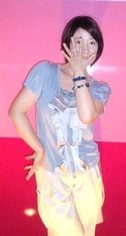
Araki'southward wife, Asami
Araki is well known for his position on staying healthy. He enjoys going on walks and riding a wheel, particularly to Japanese shrines, and has commended it as his coping mechanism when exhausted from work. He considers exercise every bit a smashing way to subject area one'south self and that carrying too many things can be a burden; Araki will typically only carry a glaze, water, and an iPod when going out.[ten]
This section requires expansion.
Family
Married to Asami Araki (荒木麻美 , Araki Asami, nickname Chami), Araki is the begetter of ii girls. A couple years afterward his debut, Araki met Asami in a group run across-up, and the two got married three months after.[11]
Biography
Araki grew up in Sendai, Nippon with his parents and younger identical twin sisters. He cites his sisters' annoyances every bit the reason he spent fourth dimension lonely in his room reading archetype manga from the '70s, such equally Ai to Makoto W , and his father's collection of art books, which Araki assumes informed his motive for cartoon manga.[12] He was particularly influenced past the piece of work of French creative person Paul Gauguin West .[13]
Araki drew his very get-go manga while he was in quaternary class. He attended a prep school through junior loftier and high school, which was where a friend complimented him on a manga he drew for the first time. Always since, he began to draw manga in secret of his parents.[12]
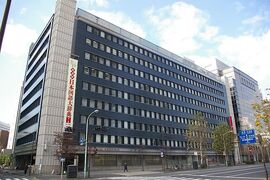
Shogakukan (left) and Shueisha (far right) HQs.
He began submitting work to publishers during his first year of high school; withal, all of his submissions were rejected.[12] At the same time, others artists who were around his age connected to brand large splashes with their debuts (Ex: Yudetamago, Masakazu Katsura). Araki could not understand why he was being rejected, so he decided to stop off a submission on an all-nighter, keep a 4-hour trip to pay a visit to the editors in Tokyo, and ask them for an explanation. At first he intended to visit Shogakukan, which published Weekly Shōnen Sunday W , but he was intimidated by the size of their building, and decided to take his submission into the smaller Shueisha (Publishers of Weekly Shōnen Leap) building next door. It was noon when he visited, only ane rookie editor (about 6'two", or 185 cm, tall) happened to be there. The editor, after reading the first folio, promptly quipped "your white-out's leaked (You haven't stock-still information technology)": he was criticized every time the editor flipped through each page. Araki, wearied from having been up all dark, felt like he was going to pass out, but was told to ready it upward for the Tezuka Awards in 5 days. That submission was "Poker Nether Arms", which won the runner up prize at the Tezuka Awards.[12] [14]
Araki left Miyagi University of Education W before graduating, and made his debut in 1980 with the aforementioned one-shot Poker Under Arms. His showtime serialization in Weekly Shōnen Bound was Cool Shock B.T. in 1983,[14] with his works Baoh: The Visitor (1984) and Gorgeous Irene (1984) following soon after. His next series would get his magnum opus W , 1986'south JoJo's Bizarre Gamble.
JoJo'southward Baroque Take chances
- Primary commodity: JoJo's Bizarre Take a chance
Published in Weekly Shōnen Jump between 1987 and 2004 and from 2004 to the present in Ultra Jump, JoJo's Bizarre Hazard represents Hirohiko Araki's master brand and body of piece of work. This section requires expansion.
The dust jacket of every volume of JoJo contains a notation to the reader; a relatively great source of Araki's direct opinions.
Way and Influences
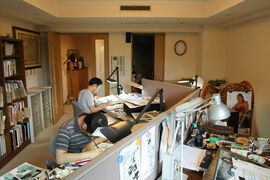
Araki's studio - own desk in foreground
Araki's cartoon usually involves idealized figures in broad, expressive poses at audacious scales and angles; with sharply inked lines and scattered, blackened planes; lending them a sculptural effect. In colour illustrations and pages, Araki varies roughly complementary color juxtapositions.
In terms of cartooning, a comparing can be drawn between Phantom Blood, Boxing Tendency, and Stardust Crusaders (1987 - '92) and the hypermasculine (and highly dimorphic) anatomical ethics applied by Tetsuo Hara in Fist of the North Star, and referenced by Araki in relation to action heroes of the 1980s.[15] Diamond is Unbreakable ('92 - '96) marks a transition to a more intersexual model; while Steel Ball Run (2004 - '11) sees greater realism, along with farther incorporation of ethics of beauty consistent with the way in manner pattern.
Reference to illustrations past artists including Antonio Lopez and Tony Viramontes informs a number of individual illustrations and character poses in Araki'southward work from 1987 - 1992; decreasing from so along with increased utilize of photographic references.[sixteen] Limited examples of costumes borrowed from contemporary fashion blueprint have been identified.
As a film fan, In the 1980s Araki noted the popularity of activity movies and the muscular physiques characteristic of their stars (such as Arnold Schwarzenegger and Sylvester Stallone). Past this example, Araki would ponder; "Who is the strongest person in the world?". Subjects such as immortality and justice occurred to him as things that humans innately value and seek. Araki had also been on a trip to Italy two years prior to the creation of Part ane: Phantom Blood, where he identified the exaltation of overt human beauty feature of renaissance fine art. Araki would combine these examples in the formulation of the bones plot and visual way of Phantom Blood.[15]
Araki has named Paul Gauguin and his approach to color theory as an influence.[17]
Araki has described his cartoon method as "classical".[15] He has indicated admiration for Leonardo da Vinci in the text of the manga and otherwise; and in a video characteristic in JOJOVELLER, he is seen making visual reference to a volume of Michelangelo's piece of work[18] during the construction of a slice.
Manga that Araki has named as admirable or having had detail influence on him include Ai to Makoto by Ikki Kajiwara and Takumi Nagayasu, the most significant of his youth;[19] Ore wa Teppei by Tetsuya Chiba, which inspired him while in middle schoolhouse to join the kendo society;[xix] and Babel II by Mitsuteru Yokoyama, specially influential for the concept of combat defined past special rules or laws.[15]
Araki has authored a book on the bailiwick of Horror movie and its influence on his work.
Araki has described his habit of naming characters and Stands after musicians and their works as "a elementary hobby", and has indicated a strong preference for Western popular music.
Gallery
Creative person Photos
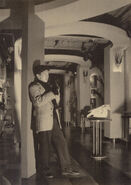
Araki from Jojo6251
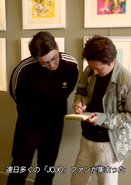
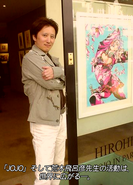
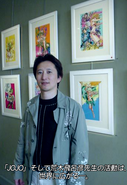
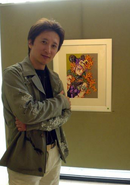
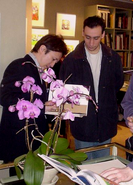
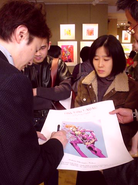
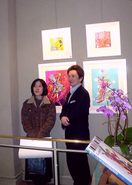
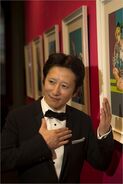
Araki at his Gucci Exhibition in Florence
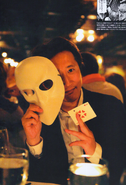
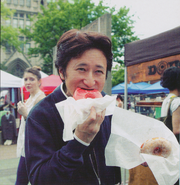
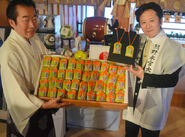
Araki and Master Priest of Kumano Hongu Taisha
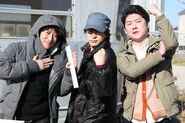
Araki with Yūsei Matsui (Bump-off Classroom) and Yūto Tsukuda (Shokugeki no Soma) for "JOJO's Kitchen"
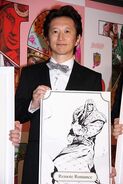
Araki at the Hirohiko Araki JoJo Exhibition 2012
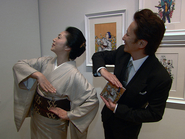
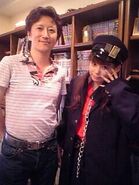
Araki and Shoko Nakagawa in an interview
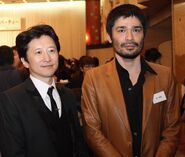
Araki and Toshio Sako (Usogui)
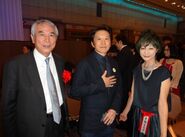
Araki with Takayuki Matsutani and Rumiko Tezuka at the 2013 Tezuka Laurels Reception political party
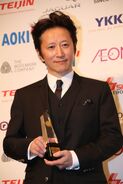
Araki awarded All-time Dressed at the 45th Annual Best Dresser Awards
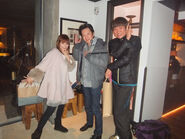
Araki and Shoko Nakagawa/Shizu going out for Italian
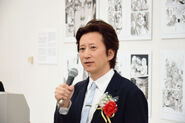
Araki at Japan Media Arts Festival (JoJolion Chiliad Prize)
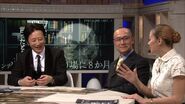
Araki on "The Profiler"
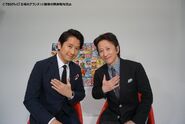
Araki with Shōsuke Tanihara on King'southward Brunch
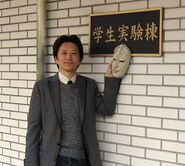
Araki at Tohoku Academy
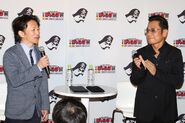
Araki and Tetsuo Hara Interview
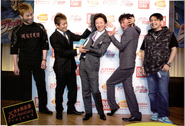

Araki and Kazuki Yamamoto (from his book)
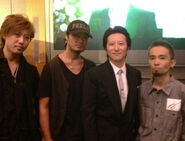
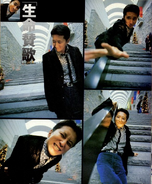
Comnavi Feb. 1998 Interview (1998)
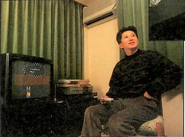
Araki playing JoJo on Super Famicom - Virtual Jump, Feb 21 Issue (1993)
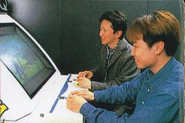
Araki playing JoJo Arcade Image with Capcom Staff - Jump '99 Issue 1 (1999)
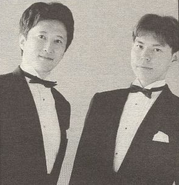
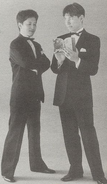
Yomu Spring two (2002)
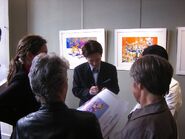
Araki at JoJo in Paris
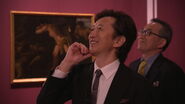
Araki on Nichibi (NHK)

Araki at Hirosegawa Interview (2011)
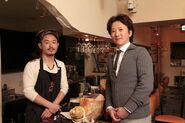
Araki at Al Fiore (2011)
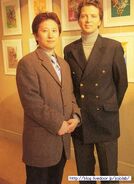
Araki and Paolo Vedovi (JOJO in PARIS) (2003)
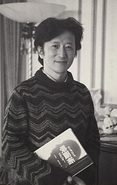
Araki in Kotoba Magazine (2016)
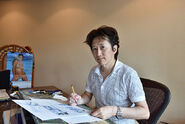
Araki from Yahoo! Japan News Interview (2018)
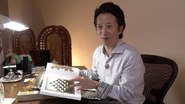
Araki on Sunday Fine art Museum "Escher: Beyond the Infinite" (2019)
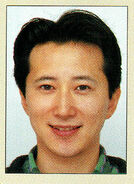
Araki in Bound Multi-World Outcome Brochure (1993)
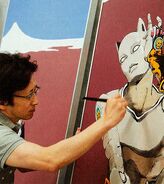
Araki drawing life-size paintings (2018)
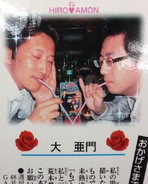
Araki with Dai Amon
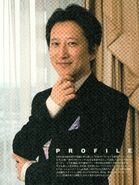
Araki in Phantom Claret Movie Booklet (2007)
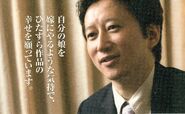
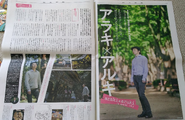
Araki in Special Effect of Morioh 'JoJofes' Newspaper (2017)
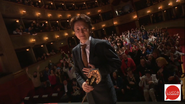
Araki at the Luca Comics & Games 2019
Tributes
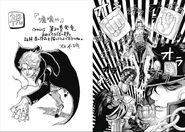
Madarame Baku (Left) by Araki
Jotaro (Correct) by Toshio Sako
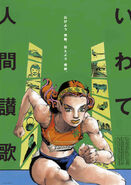
Araki's promotion for the Iwate Land of Promise Sports Festival
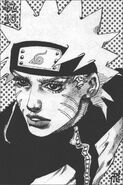
Naruto's 10th Anniversary fine art drawn past Araki
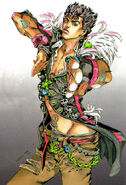
Kenshiro past Araki (Weekly Comic Brunch - Jan 8, 2007 Issue)
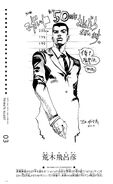

Ultra Jump Egg's mascot "Cisco" drawn past Araki
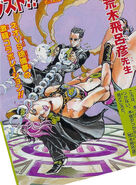
A tribute to Matrix Reloaded
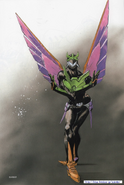
Masakazu Katsura 30th Anniversary - Wingman
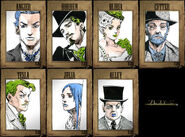
The cast of the flick The Prestige drawn past Araki
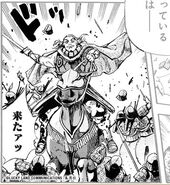
Araki's contribution to the "Social Kingdom" projection
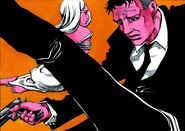
Araki's artwork for the 2008 motion picture Taken
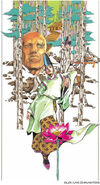
Araki promoting the historical Hiraizumi ruins
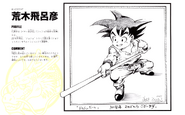
Araki's contribution to the Dragon Brawl: Super History Book
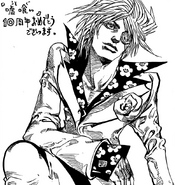
Usogui's 10th Anniversary
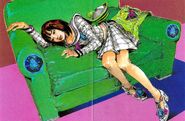
Suzu Hirose from 17才のすずぼん
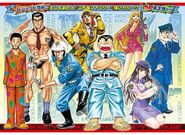
Cast of Kochikame fatigued by different artists
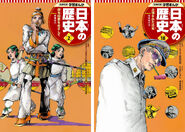
Araki's Prince Shotoku and Douglas MacArthur from the 'Learning Japanese History Through Manga' Series
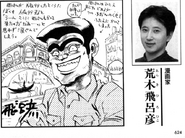
Kochikame 15th Anniversary
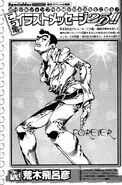
Kochikame 25th Anniversary
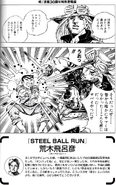
Kochikame 30th Anniversary
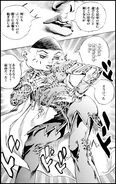
Taizou Mote King Saga Tribute past Araki
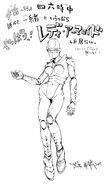
Lady Armaroid by Araki from Cobra Mook
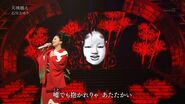
Sayuri Ishikawa in "Red and White Vocal Battle". Background image fatigued past Araki
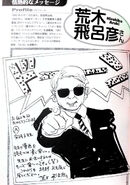
Fujiko Fujio A past Araki
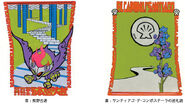
Amuse design drawn past Araki for Kumano Hongu Taisha Shrine
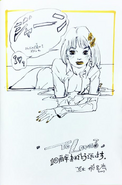
To Love-Ru Relate (2017)
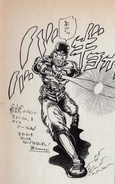
Yamashita Tarou-kun (Volume v)
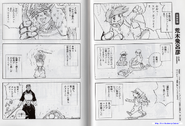
Harris no Kaze (Tetsuya Chiba 55th Anniversary Mook)
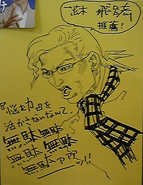
Kang Sang-jung drawn by Araki for release of "Struggling to Strength" (2009)
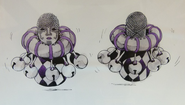
Figure design fatigued by Araki for Boxing Suspension:Trading Figure Battle (2011)
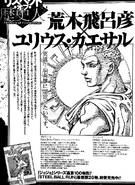
Gaius Julius Caesar
Anthology Covers
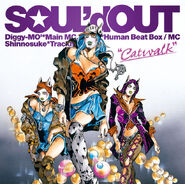
Cover to the album "Catwalk" past Soul'd Out W . Drawn by Araki
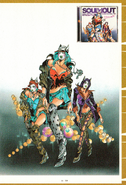
CatWalk Full
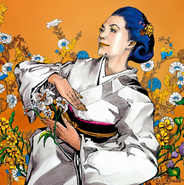
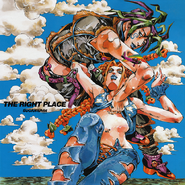
Cover to SUGIURUMN's "Music is the key of Life" fatigued past Araki
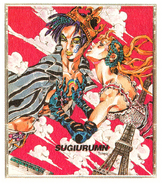
SUGIURUMN'south "Life Basis Music" drawn by Araki
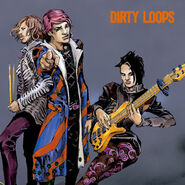
Cover to Muddy Loops Westward ~Complete Edition~. Drawn past Araki
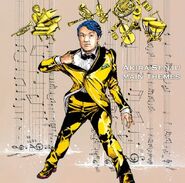
Akira Senju W 'southward "Main Themes" collection cover drawn past Araki
Trivia
- Araki'south favorite book as a kid was The Adventures of Sherlock Holmes W .[2]
- In 2012, Araki celebrated his 30th year as a manga artist and the 25th ceremony of JoJo's Bizarre Hazard. A special exhibition was held in Sendai, Nippon, which included the announcement for the TV Anime and All Star Battle.
- On Nov 30, 2016, Araki won the 45th Almanac All-time Dresser Awards in Tokyo in the "Bookish and Cultural Arts" division. When questioned about his youthful appearance, Araki said that he washes his face every morning with Tokyo'southward tap water.[xx]
- Araki was given an art honour for the twelvemonth 2018 by the Agency for Cultural Affairs for his art exhibition Ripples of Adventure.[21]
References
|
| People | |
|---|---|
| |
| David Production |
|
| Animators & Other Animation Staff |
|
| Voice Actors |
|
| Musicians |
|
| Shueisha | |
|---|---|
|
Source: https://jojo.fandom.com/wiki/Hirohiko_Araki
0 Response to "An Analysis for the Works of Escher and Their Use in Art Education"
Post a Comment